Dixie Theatre
Introduction
Text-to-speech Audio
The “New Astor Theatre” debuting silent films in 1928. In 1932 the theatre was sold to prominent Ruston citizen T.L. James, who oversaw renovations and the installation of the grand chandelier that resides in the theatre to this day. The theatre reopened as the “Rialto,” and began showing “talkies,” movies with sound, but suffered a fire in early 1933, destroying parts of the stage, seating, and the sound and stage equipment. The Rialto prevailed though, and became “North Louisiana’s most magnificent show house” with completely new interior décor a few months later.
In 1937 the Dixie Theatre Corporation of New Orleans took over management of the theatre and altered the front lobby to include a street-accessed box office, a confectionary shop, and a segregated entrance. The name was changed again too, this time to the “Dixie Theater.”
Images
Dixie Theatre, Christmas 2020
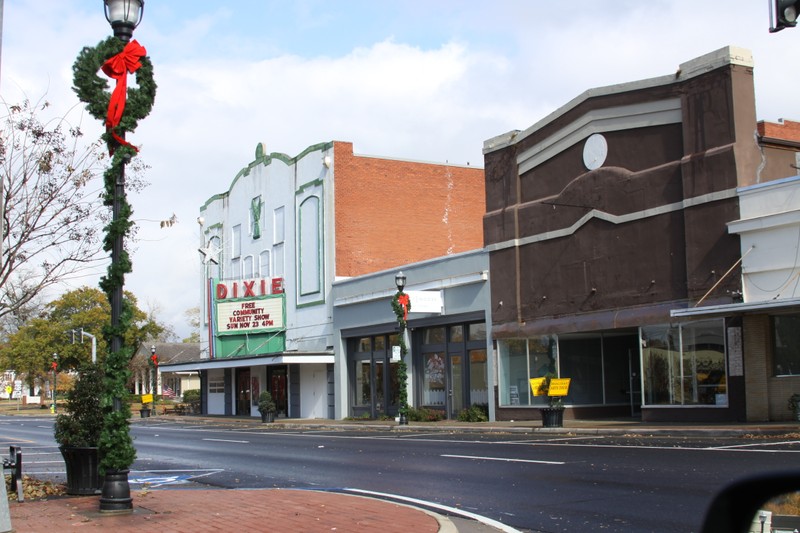
Dixie Theatre , 1956
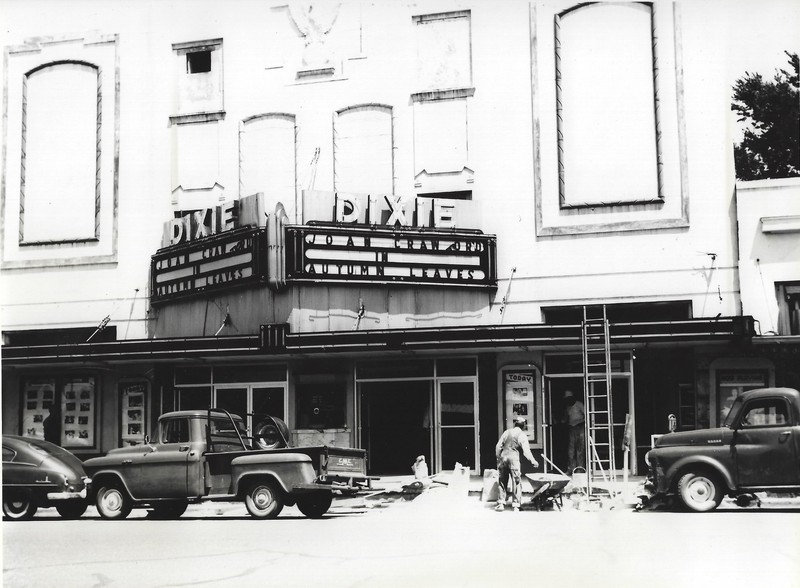
Dixie Theatre, 1952
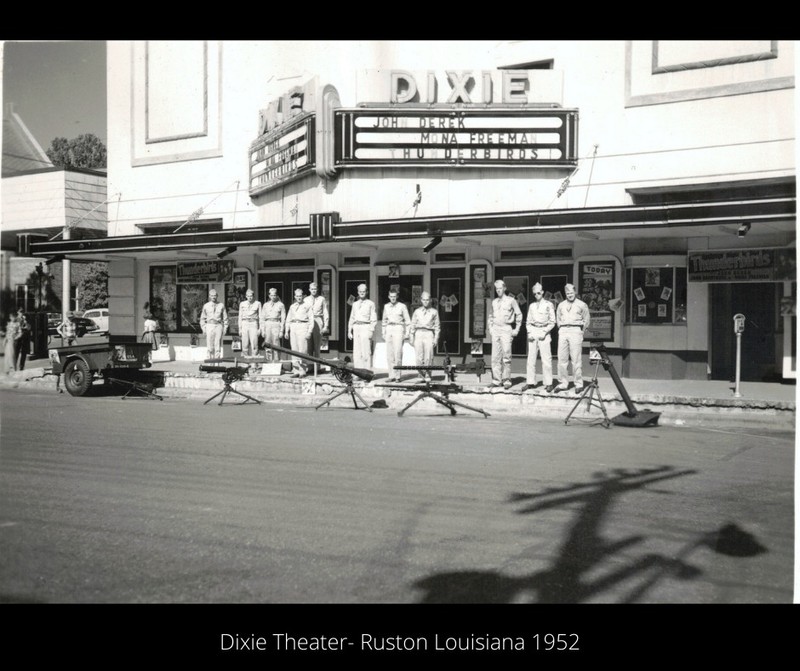
Dixie Theatre, 1929
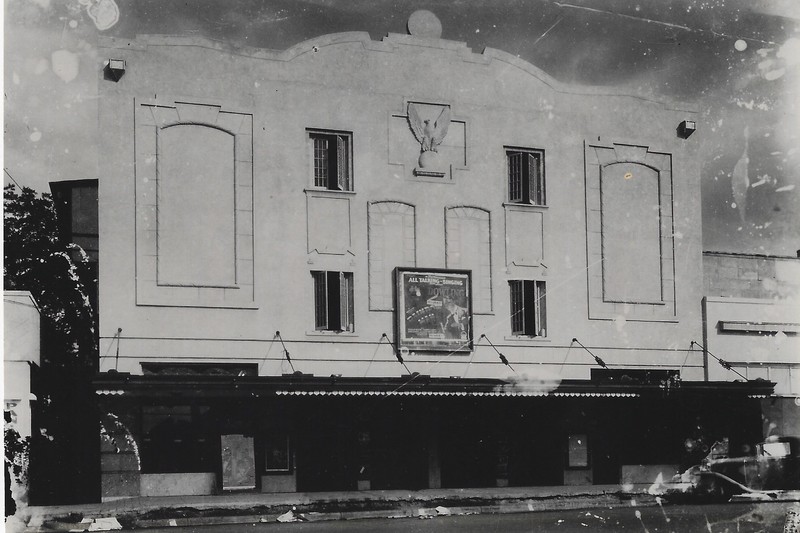
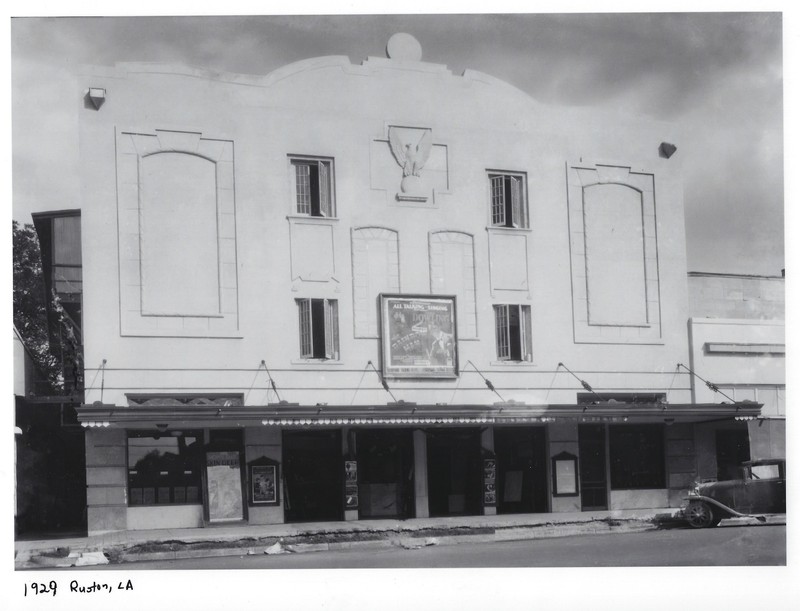

Backstory and Context
Text-to-speech Audio
The Dixie Center for the Arts began as the “New Astor Theatre” debuting silent films in 1928.
In 1932 the theatre was sold to prominent Ruston citizen T.L. James, who oversaw renovations and the installation of the grand chandelier that resides in the theatre to this day. The theatre reopened as the “Rialto,” and began showing “talkies,” movies with sound, but suffered a fire in early 1933, destroying parts of the stage, seating, and the sound and stage equipment. The Rialto prevailed though, and became “North Louisiana’s most magnificent show house” with completely new interior décor a few months later.
In 1937 the Dixie Theatre Corporation of New Orleans took over management of the theatre and altered the front lobby to include a street-accessed box office, a confectionary shop, and a segregated entrance. The name was changed again too, this time to the “Dixie Theater.”
The segregated entrance was not only an indicator of heightened racial tensions over job competition throughout the Great Depression. Today most traces of this entrance and side stair have been removed, but its story remains a powerful reminder of our past, and how the theatre has evolved to invite people of all colors and creeds into its doors.
1956 saw another transformation of the theatre, this time reflecting society’s new obsession with futuristic technology and soon mankind’s “race to the moon.” These changes included the first installation of an air conditioning system, sleek metal “Comet” chairs, and the distinctive neon star above the marquee that still remains. The 1960s would see yet another remodel, before the advent of home entertainment and other newer theatre options pushed the Dixie out of the movie business in 1978.
Ruston citizens continued to encourage the use of the theatre for local entertainment though, like the weekly Joe Wood’s Wildwood Express band, the Dixie Jamboree, and other small plays and events, under the ownership of James C. Howard in the 1980s through the 1990s. On October 14, 1993, the building was added to the National Register of Historic Places, a distinction held by only a few buildings in Downtown Ruston. By 1994 however, the theatre was in great disrepair, and much out-of-date with current fire and building safety code and the Fire Marshall shut it down.
A group of caring locals refused to let the Dixie die so in 1996, the Dixie Center for the Arts came together for their first meeting, and began crafting a vision for the restoration of the cultural landmark. The North Central Louisiana Arts Council (NCLAC) helped DCA receive their early funds with their nonprofit status, and draw up plans for the renovation of the theatre. DCA raised funds in the Ruston community for ten years, won a Rural Development Grant in 1997, and received funding from the state 1999 to aid with the theatre’s restoration.
In 2006 the renewed “Dixie Theatre” opened its doors to the world, with the goal of being a rallying point and home for the arts in Ruston, and north Louisiana. Now NCLAC houses its offices there, the Ruston Community Theatre players hold their annual shows there, and the building is open to rentals for concerts, meetings, and other special events. The theatre is owned by the DCA nonprofit and is used by many organizations for meetings, performances, and other special events.
Sources
"History of the Dixie," at https://dixiecenter.org/our-history
by Wesley Harris
Lincoln Parish Museum & Historical Society
Lincoln Parish Museum & Historical Society
Lincoln Parish Museum & Historical Society
